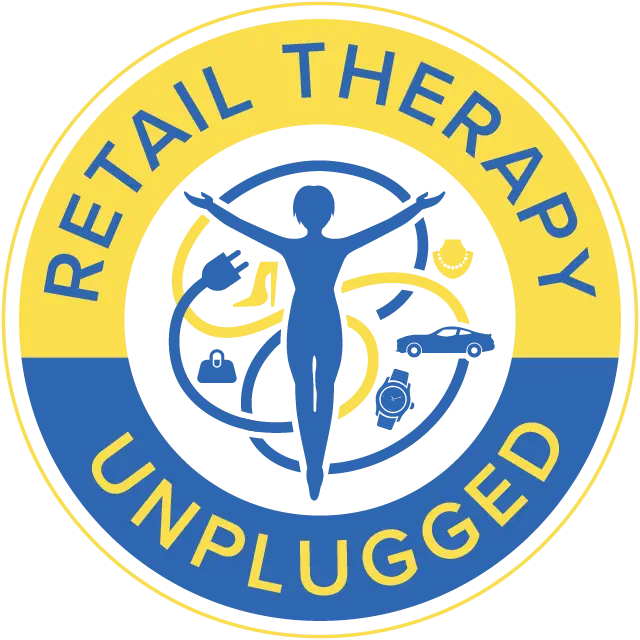Understanding Oniomania
When Shopping Becomes Compulsive
Discover the truth about compulsive shopping disorder and find your path to freedom.

If you’ve ever felt trapped in a cycle of shopping and spending that feels beyond your control, you’re not alone. Oniomania—the clinical term for compulsive shopping disorder—affects millions of people from all walks of life.
At Retail Therapy Unplugged, we understand that this isn’t about weakness or lack of discipline. It’s a complex behavioral condition with real emotional and neurological roots.
Key Insight
“Recovery is absolutely possible with the right support and evidence-based approach.”20+ Years
of Experience with Dr. Leslie Davis🎯
You’re Not Alone
Millions of people struggle with compulsive shopping disorder. It’s more common than you think.
🧠
It’s Not About Willpower
Oniomania is a complex behavioral condition with real emotional and neurological roots.
✨
Recovery Is Possible
With evidence-based coaching and support, you can break free from compulsive shopping.
Your Learning Journey
Understand compulsive shopping disorder
Identify symptoms in yourself or loved ones
Why oniomania develops and what triggers it
Evidence-based coaching solutions
Follow this structured learning journey to understand compulsive shopping and discover your path to freedom.
Understanding Compulsive Shopping Disorder
🧠The Shopping Brain: Understanding the Cycle
1. Trigger
Stress/Emotion
🎉
2. Dopamine Rush
The “High”
😔
3. Crash
Guilt/Shame
🔄️
4. Repeat Cycle
Seeking Relief
This neurological pattern is similar to other behavioral addictions, involving the brain’s reward system.
Understanding the Truth About Compulsive Shopping
❌ Common Myths
❌ “It’s just poor financial management”
❌ “Only affects wealthy people”
❌ “It’s about being materialistic”
❌ “Just need more willpower”
✅ Scientific Reality
✅ A recognized behavioral addiction
✅ Affects all socioeconomic levels
✅ About emotional regulation
✅ Requires professional support
5-8%
of adults affected
90%
have co-occurring conditions
6x
more likely to have anxiety
Signs and Symptoms: Assess Your Severity Level
Use this interactive scale to understand where you might fall on the compulsive shopping spectrum. Check the symptoms that apply to you in each category:
MILD
MODERATE
SEVERE
Mild Indicators
Early warning signs to be mindful of:
Behavioral
Emotional
Financial
Moderate Indicators
Signs that intervention may be helpful:
Behavioral
Emotional
Financial
Severe Indicators
Professional support strongly recommended:
Behavioral
Emotional
Financial
Remember: This is a self-assessment tool, not a diagnostic instrument.
Why Does Oniomania Develop? Understanding Your Triggers
Compulsive shopping rarely occurs in isolation. Use this trigger wheel and conditions matrix to understand your risk factors:
Shopping Trigger Wheel
🏃♀️
PHYSICAL
Fatigue • Hunger
PMS Symptoms
Physical Discomfort
😔
EMOTIONAL
Stress • Anxiety
Depression • Boredom
Loneliness • Sadness
🌍
SOCIAL
Peer Pressure
Social Media
FOMO • Status
YOUR
TRIGGERS
🧠
COGNITIVE
“Just This Once” Rationalization
All-or-Nothing
💰
FINANCIAL
Reward Spending
Credit Available
“I Deserve This”
⏰
SITUATIONAL
Sales Events
Free Time • Payday
Special Occasions
Co-occurring Conditions: Understanding the Connections
Research shows compulsive shopping often occurs alongside other mental health conditions:
😔 Depression
60%
co-occurrence rate
Shopping becomes a temporary mood lifter, but creates a cycle of guilt that worsens depression.
😰 Anxiety
75%
co-occurrence rate
Anxiety drives shopping for immediate relief, but financial stress increases anxiety levels.
⚡ ADHD
45%
co-occurrence rate
Impulsivity and reward-seeking behavior create vulnerability to shopping urges.
🎭 Other Addictions
30%
co-occurrence rate
Substance use, gambling, or other behavioral patterns often co-exist.
⚠️ Important Note
Understanding co-occurring conditions helps explain why willpower alone isn’t effective. Professional support addresses the full spectrum of interconnected factors.
The Hidden Costs vs. The Recovery Reality
😔 Life With Oniomania
💰 Financial Strain
$23K average debt, bankruptcy risk
💔 Broken Relationships
Secrecy, betrayed trust, isolation
😰 Financial Strain
Guilt, shame, depression, anxiety
✨ Life After Recovery
💚 Financial Freedom
Debt eliminated, savings growing
🤝 Restored Trust
Open communication, rebuilt bonds
😊 Emotional Stability
Confidence, peace, authentic joy
🚀 Ready to Transform Your Life?
Recovery isn’t just possible—it’s happening every day for people just like you.
Your Path to Freedom: The Recovery Process
Recovery is absolutely possible with evidence-based support
CBT techniques help you recognize and change the thinking that drives shopping urges.
Learn concrete strategies for managing emotions, budgeting, and finding alternative fulfillment.
Address underlying emotional needs and build lasting resilience for authentic fulfillment.
Success Story Spotlight

⭐⭐⭐⭐⭐ “This program saved my marriage and my financial future”
You’ve taken the brave first step by learning about oniomania. Now, let us help you take the next step toward lasting freedom. Schedule a free, confidential consultation to discuss your situation and find the right support path for you.
Get Your Personalized Recovery Plan
Take our free self-assessment to better understand your shopping patterns
Continue Your Learning Journey
📃
Start with the Free "Compulsive Shopping" Assessment
Discover Your Shopping Patterns in 3 Minutes.
📖
Want to learn more first?
❔
Have questions about which program is right for you?
We’re here to help you find the perfect path to transformation.

